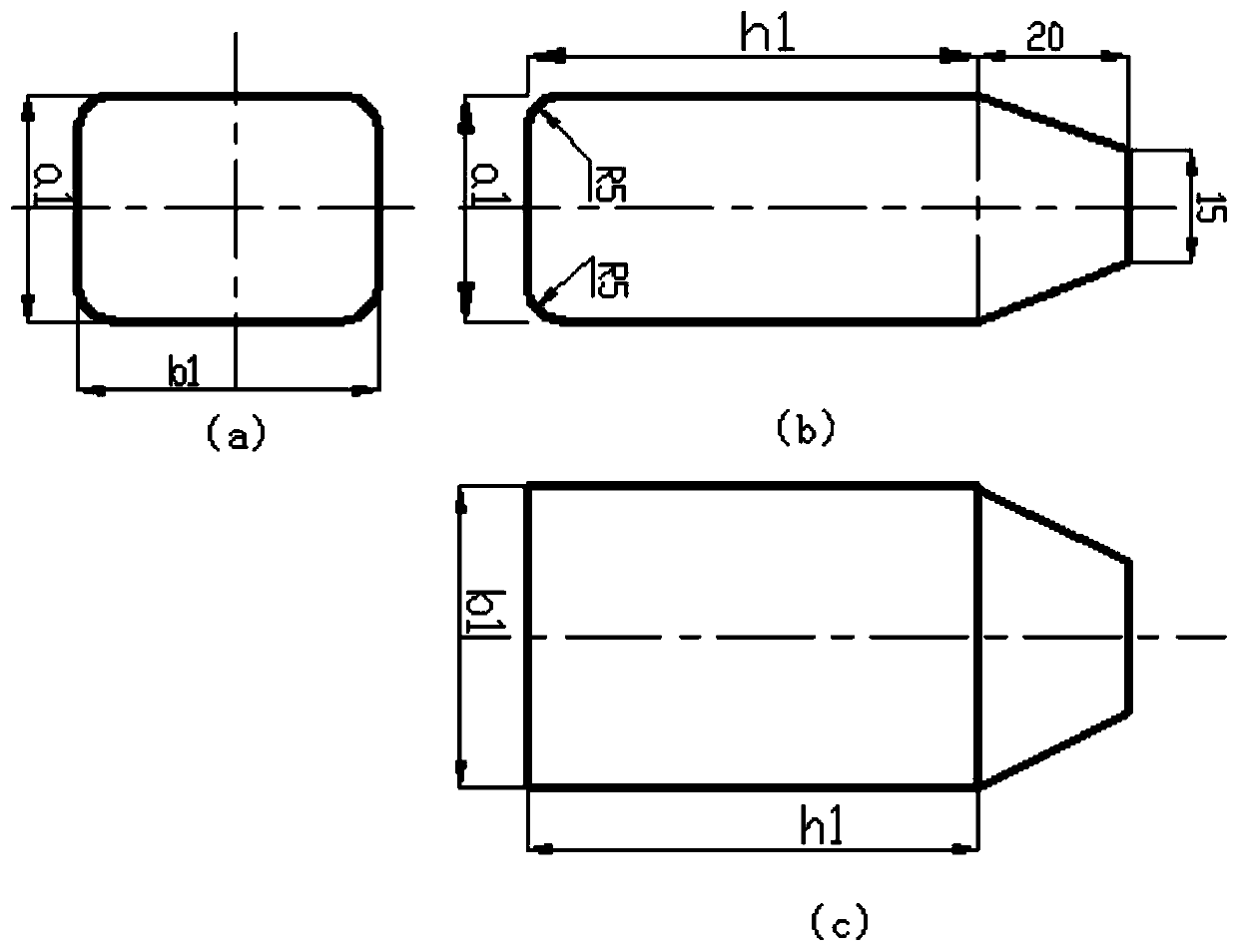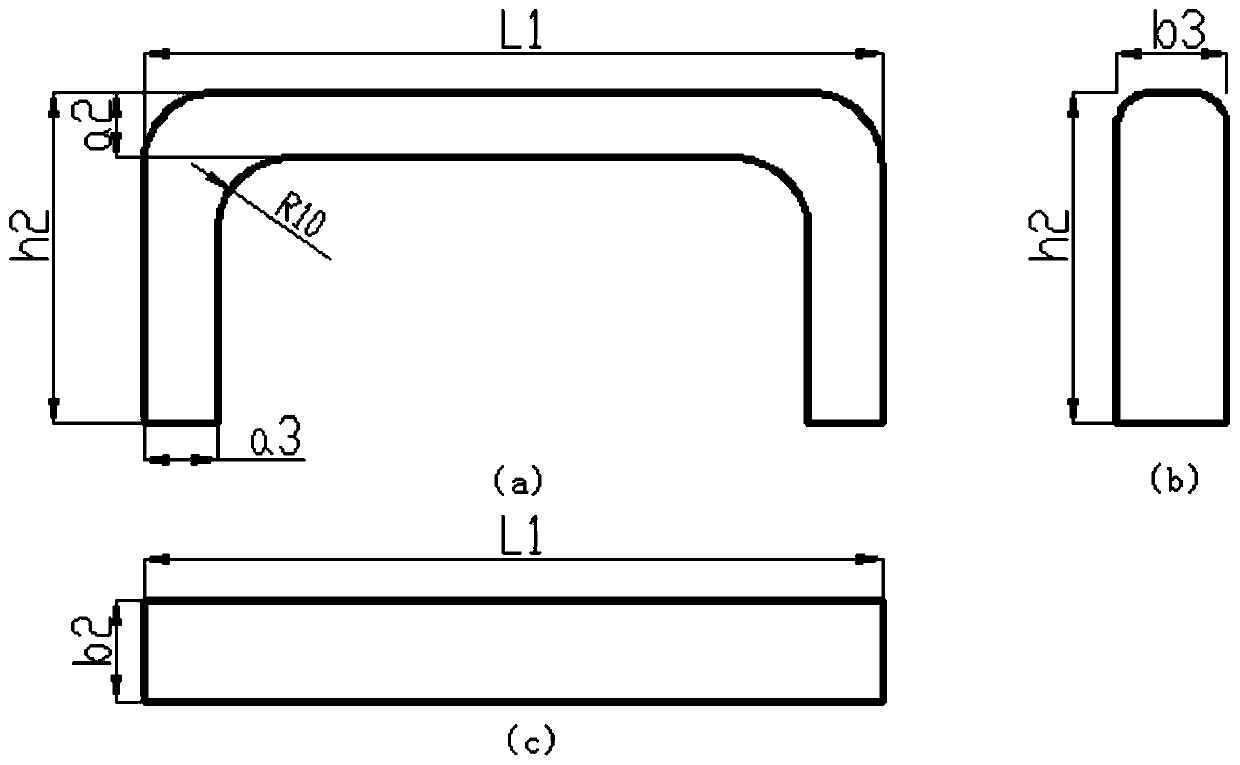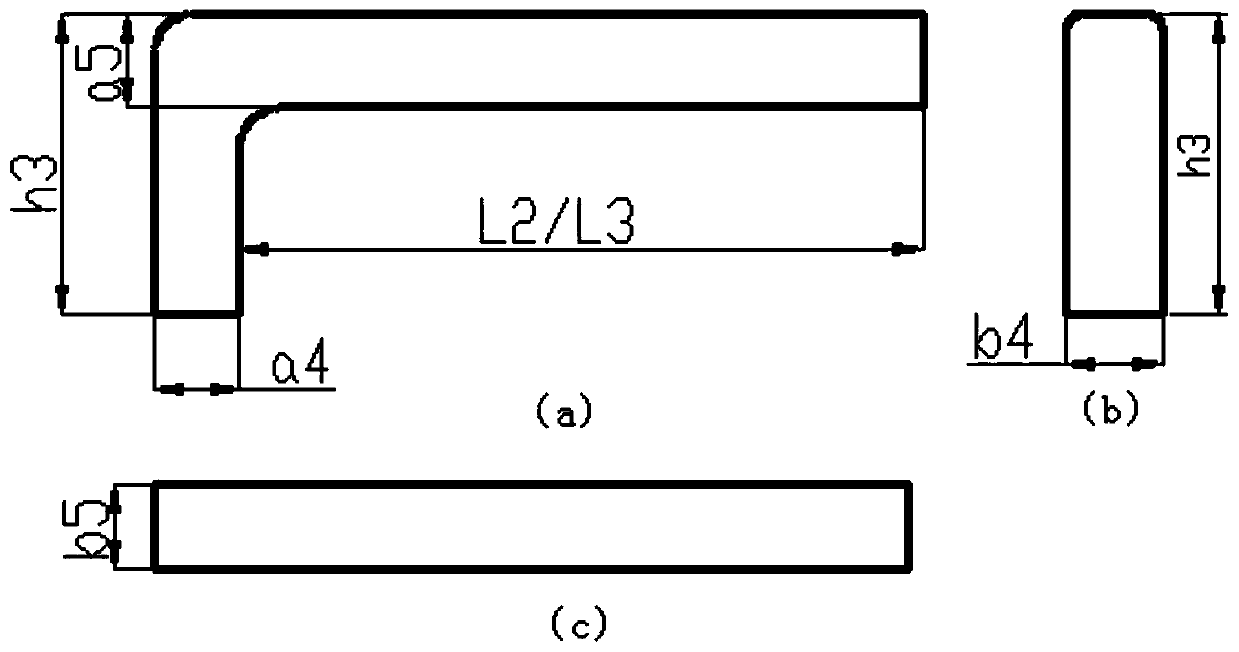A Casting Defect Control Method and Application of Lattice Sandwich Structural Parts
A sandwich structure and casting defect technology, which is applied to casting molding equipment, cores, molds, etc., can solve problems such as loose structure segregation, and achieve great application prospects
- Summary
- Abstract
- Description
- Claims
- Application Information
AI Technical Summary
Problems solved by technology
Method used
Image
Examples
Embodiment 1
[0050] Such as Image 6 As shown, in this embodiment, the module preparation process is as follows: making the sprue mold → pressing the sprue wax pattern → trimming the sprue wax pattern → assembling the part wax pattern → combining the gating system → trimming the module. See Table 4 to Table 6 for runner dimensions. First, press various sprue wax patterns, and then press Figure 1-Figure 3 Check size, press Figure 4-Figure 5 Combination: (1) Arrange the cores of the lattice structure on the lower plate 6 with a length of 1.2m, a width of 0.8m and a thickness of 3mm, such as Figure 7 Shown; Then the plate 5 is assembled and welded to make a part wax pattern. (2) Press on the upper plate 5 Figure 4-Figure 5 Place ingates and runners, such as Figure 8 shown. (3) Place the sprue cup on the combined runner to form a module, such as Figure 9 shown. After the assembled wax pattern is placed for a certain period of time, the shell is made. Before pouring, the shell is...
Embodiment 2
[0052] Such as Image 6 As shown, in this embodiment, the module preparation process is as follows: making the sprue mold → pressing the sprue wax pattern → trimming the sprue wax pattern → assembling the part wax pattern → combining the gating system → trimming the module. See Table 4 to Table 6 for runner dimensions. First, press various sprue wax patterns, and then press Figure 1-Figure 3 Check size, press Figure 4-Figure 5 Assembling: (1) Assembling the part wax mold, first arrange the V-shaped sheet cores on the lower plate 6 with a length of 1.2m, a width of 0.8m, and a thickness of 3mm, and then assemble and weld the upper plate 5 to make a part wax model, such as Figure 11 shown. (2) Press on the upper plate 5 Figure 4-Figure 5 Place ingates and runners. (3) Place sprue cups on the assembled runners to form modules. After the assembled wax pattern is placed for a certain period of time, the shell is made. Before pouring, the shell is preheated at 1000°C for ...
Embodiment 3
[0054] Such as Image 6 As shown, in this embodiment, the module preparation process is as follows: making the sprue mold → pressing the sprue wax pattern → trimming the sprue wax pattern → assembling the part wax pattern → combining the gating system → trimming the module. See Table 4 to Table 6 for runner dimensions. First, press various sprue wax patterns, and then press Figure 1-Figure 3 Check size, press Figure 4-Figure 5 Assembling: (1) Assemble the part wax model, first arrange the cores of the lattice structure on the lower plate 6 with a length of 1.2m, a width of 0.8m, and a thickness of 3mm, and then assemble and weld the upper plate 5 to make a part wax model, such as Figure 13 shown. (2) Press on the upper plate 5 Figure 4-Figure 5 Place ingates and runners. (3) Place sprue cups on the assembled runners to form modules. After the assembled wax pattern is placed for a certain period of time, the shell is made. Before pouring, the shell is preheated at 10...
PUM
 Login to View More
Login to View More Abstract
Description
Claims
Application Information
 Login to View More
Login to View More - R&D
- Intellectual Property
- Life Sciences
- Materials
- Tech Scout
- Unparalleled Data Quality
- Higher Quality Content
- 60% Fewer Hallucinations
Browse by: Latest US Patents, China's latest patents, Technical Efficacy Thesaurus, Application Domain, Technology Topic, Popular Technical Reports.
© 2025 PatSnap. All rights reserved.Legal|Privacy policy|Modern Slavery Act Transparency Statement|Sitemap|About US| Contact US: help@patsnap.com



